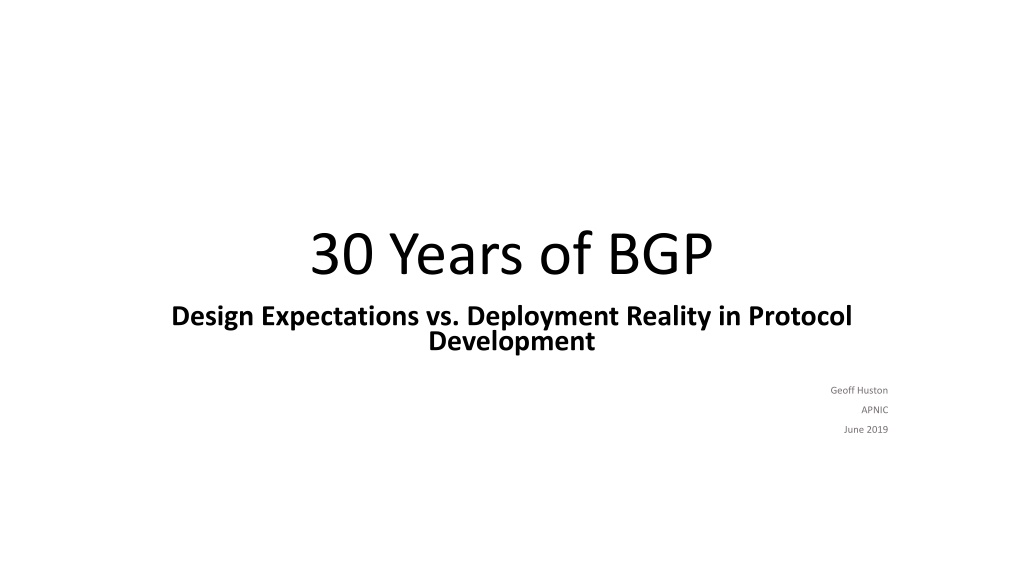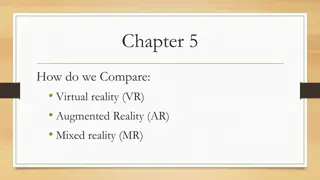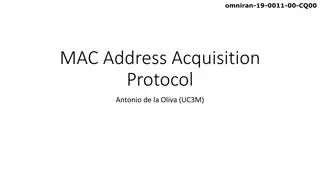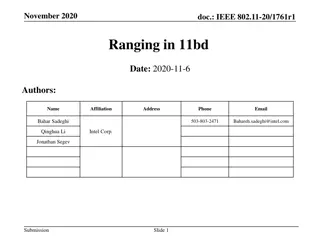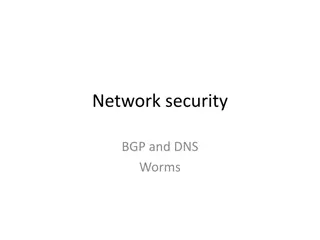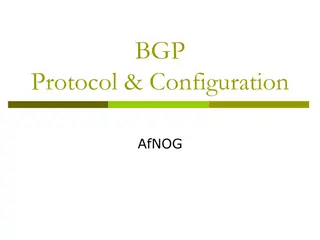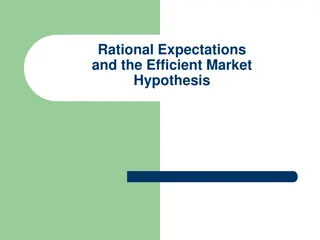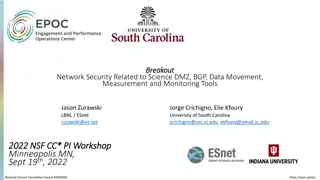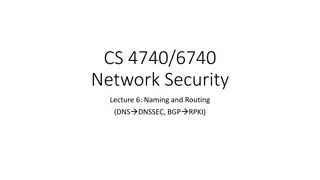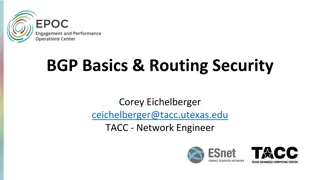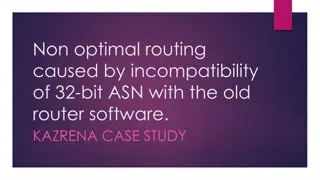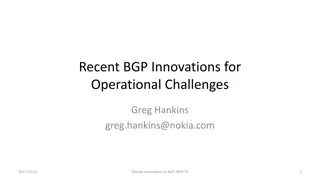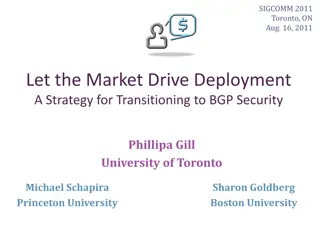Evolution of BGP: Expectations vs. Reality in Protocol Development
BGP has evolved over 30 years from its origins as an advancement of EGP in the 1980s to address issues like routing explosion, IPv6 integration, and imperfections such as session insecurity and protocol instability. Despite challenges, BGP remains a critical component of inter-domain routing, adapting to scalability demands and playing a pivotal role in modern networking protocols.
Download Presentation

Please find below an Image/Link to download the presentation.
The content on the website is provided AS IS for your information and personal use only. It may not be sold, licensed, or shared on other websites without obtaining consent from the author. Download presentation by click this link. If you encounter any issues during the download, it is possible that the publisher has removed the file from their server.
E N D
Presentation Transcript
30 Years of BGP Design Expectations vs. Deployment Reality in Protocol Development Geoff Huston APNIC June 2019
In the Beginning BGP was an evolution of the earlier EGP protocol (developed in 1982 by Eric Rosen and Dave Mills) BGP-1 RFC 1105, June 1989, Kirk Lougheed, Yakov Rekhter TCP-based message exchange protocol, based on distance vector routing algorithm with explicit path attributes BGP-3 RFC1267, October 1991, Kirk Lougheed, Yakov Rekhter Essentially a clarification and minor tweaks to the basic concepts used in BGP BGP-4 RFC 1654, July 1994, Yakov Rekhter, Tony Li Added CIDR (explicit prefix lengths) and proxy aggregation
Containing the Routing Explosion IETF ROAD Efforts in 1992 (RFC1380) Predicted exhaustion of IPv4 addresses and scaling explosion of inter-domain routing The chosen solution was to drop the concept of address classes from BGP It (sort of) worked
Containing the Routing Explosion IETF ROAD Efforts in 1992 (RFC1380) Predicted exhaustion of IPv4 addresses and scaling explosion of inter-domain routing The chosen solution was to drop the concept of address classes from BGP It (sort of) worked
IPv6 and BGP While the IETF adopted the IPv6 address architecture for the address exhaustion issue, it was unable to find an IPv6 routing architecture that had similar scaling properties IETF efforts to impose a routing hierarchy (TLAs and sub-TLAs RFC 2928) got nowhere! So we just used BGP for IPv6 in the same way as we used BGP for IPv4 Address allocation policies that allocated independent address blocks of /35 or larger ISP traffic engineering and hijack defence by advertising /48s
BGP isnt perfect Session insecurity Payload insecurity Protocol instability Sparseness of signalling No ability to distinguish between topology maintenance and policy negotiation
Scale generates inertia BGP-4 was introduces when the routing table contains ~ 20K entries it is now ~800K entries The network carries some 75K ASNs Changing the internet to use a new common IDR protocol would be incredibly challenging something would need to break to force change
BGP Scaling BGP has scaled because the protocol only passes changes As long as the change rate is low the BGP load is low And the inter-AS topology of the Internet works in BGP s favor And this has allowed BGP to grow well beyond the original design expectations
Expectations vs Deployment Session lifetime Expectations of short session lifetimes experience of longevity Session Security Expectation of routing being a public function - experience of session attack Payload Integrity Expectations of mutual trust experience of malicious and negligent attack Protocol Performance Expectations of slow performance experience of more demanding environments Error Handling Expectations of clear session as the universal solution experience required better recovery without session teardown Use Expectations of topology maintenance experience of traffic engineering
Why does BGP still work? It s a Hop-by-Hop protocol This allows new behaviours to be deployed on an incremental basis, as long as there is a tunnelling capability to pass through legacy speakers A classic example is the 2-byte to 4-byte AS number transition in BGP It s layered above a generic reliable stream transport Arbitrary message sizes are supportable No need to refresh sent information
